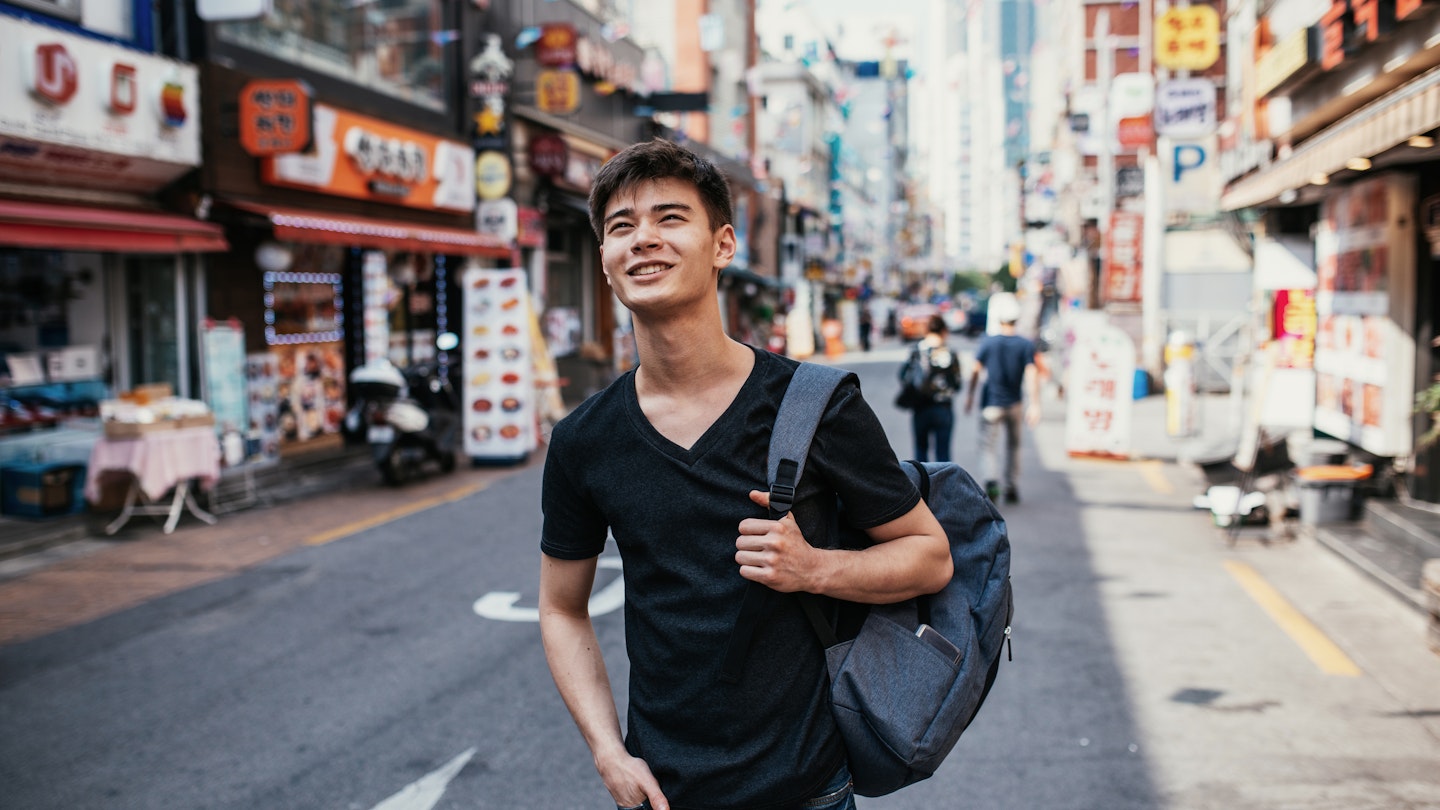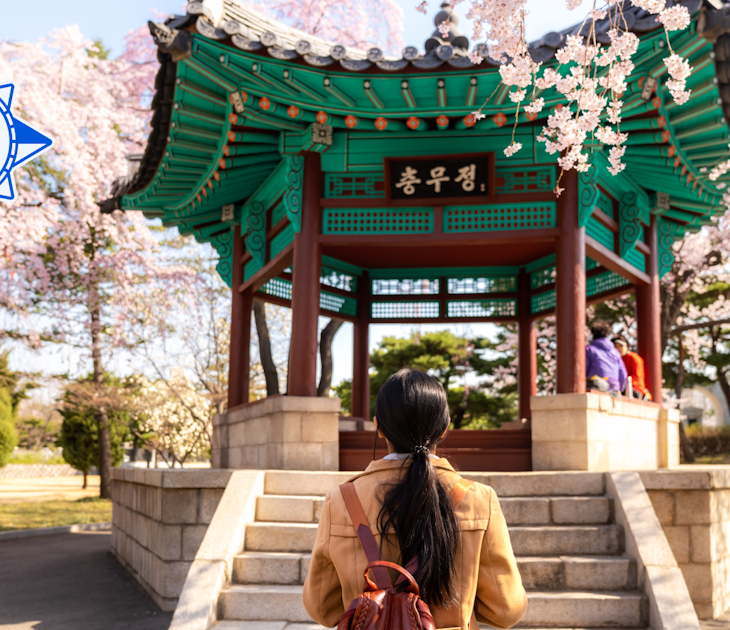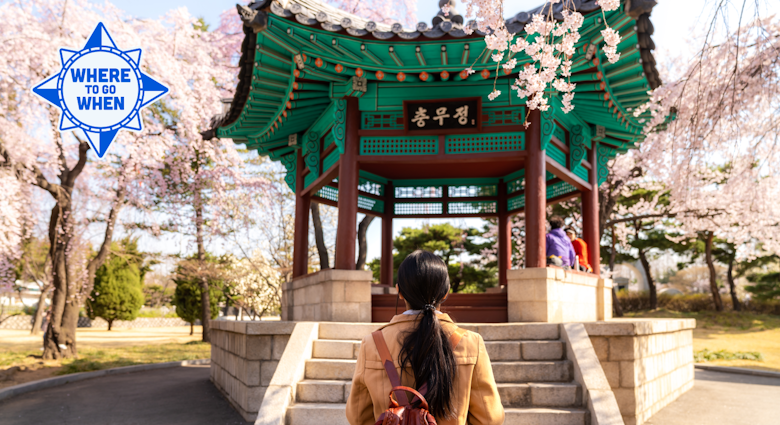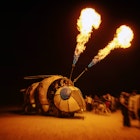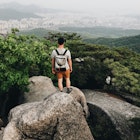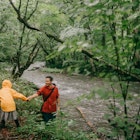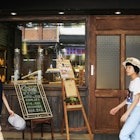With a temperate continental climate, Seoul is known for its biting winters and its blistering summers.
In between are the long-awaited but all-too-fleeting pockets of perfectly enjoyable weather, perhaps the best moments to visit this exciting city. Even so, every season in South Korea offers something worth traveling for, which might make for a difficult decision when it comes to planning your trip.
Customarily, summer brings the most international visitors to Seoul, further congesting an already packed city. But in recent years, spring and fall – with fetching foliage and ideal weather – have caught on as in-demand times to visit.
As you make your own plans, here’s our guide to the best times to visit Seoul.
Discover 30+ top Seoul attractions all on one pass with Go City. Pick between a 1 to 5- day All-Inclusive Pass and brave the thrill rides at Lotte World, visit the border on a Demilitarized Zone Tour, enjoy the views from N Seoul Tower, and much more!
High season (March–May and September–November) is the best time for outdoor attractions
Unquestionably the most agreeable seasons in Seoul, spring and fall are also the best times to soak up the city’s great outdoors, from the natural wonders of its national and city parks to the back-alley treasures of its traditional villages, temples, markets and street food stalls. A prized spot, the Han River is where visitors can paddle around on swan boats or have a chimaek picnic of fried chicken and beer (chimaek is slang that combines “chicken” with the Korean word for beer, maekju).

Enjoy indoor activities during shoulder season (June–August)
While June is pleasant, July and August bring unbearable heat and humidity, along with heavy rains that can last all day. Luckily, Seoul has plenty of things to do for keeping dry and cool inside. Go museum or gallery hopping, experience South Korea’s quirky cafe culture or get lost in Asia’s largest underground shopping mall, COEX, where there’s also an aquarium, library, movie theater and casino.
Avoid the crowds and save money in low season (December–February)
Despite its cold climate, with dry winds that wreak havoc on the skin and throat, Seoul is wondrous in the winter. The diminished crowds make the city feel smaller and more intimate, drawing into stark relief the sights, sounds and scents of everyday life. Think snow-dusted palaces, shopkeepers sweeping the flakes from their front stoops and roasted chestnuts and sweet potatoes perfuming the air. You can also stretch your budget further, as the cold winter months are the most affordable time to visit.
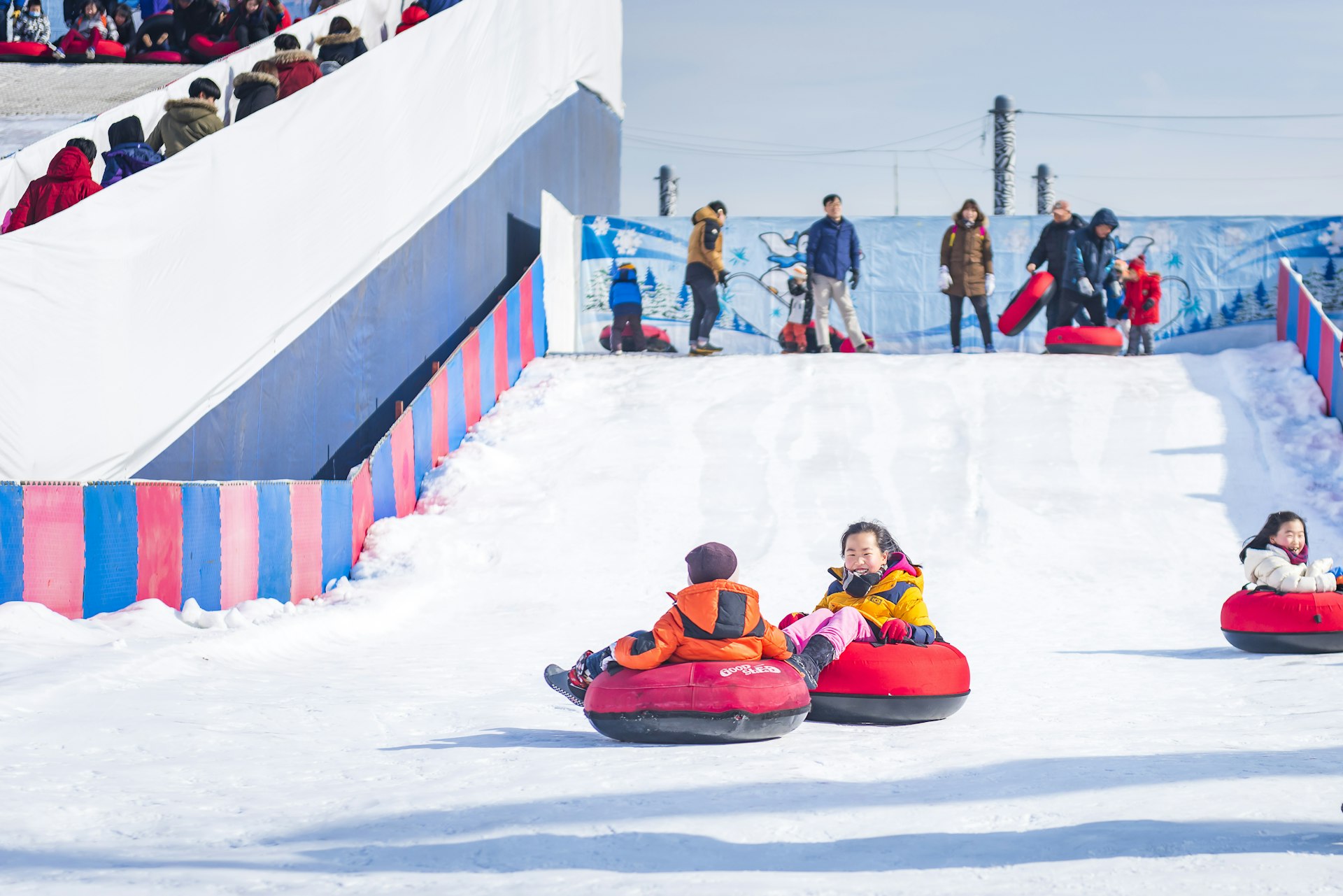
You’ll have the city almost to yourself in January
It’s no surprise that Seoul’s chilliest month also records its lowest number of incoming visitors. Between the below-freezing temperatures and accumulated snowfall, trekking around the city can feel like a slog – but there is something special about January’s austerity, too, as the bustling megacity shrinks to its core. This is also a moment to take advantage of short lines and reduced costs. If you enjoy winter sports, venture out for a day of skiing, snowboarding or ice fishing.
Celebrate the lunar new year in February
Seollal, the Korean New Year based on the lunar calendar, typically falls between late January and mid-February. In the lead-up to the holiday, be on the lookout for special celebrations and traditional performances at folk villages and palaces, before Seoulites empty out of the capital to travel back to their hometowns for family festivities. If you’re in Seoul over Seollal, much will be shuttered – though you should make the effort to hunt down a bowl of ddeokguk (rice cake soup), South Korea’s quintessential new year’s dish.
Key events: Seollal, Korea Grand Sale
March brings warmer temperatures
March ushers in Seoul’s slow thaw as temperatures reach a daily high around 10ºC (50ºF), making it a mostly pleasing time to move around the city. For runners, this may take the form of the Seoul Marathon, the longest-running marathon in Asia and the second-oldest marathon in the world after Boston’s. Each year, the event welcomes some 35,000 runners, from expert to amateur. Unlike some other races, anyone who signs up ahead of time is qualified to participate.
Key event: Seoul Marathon
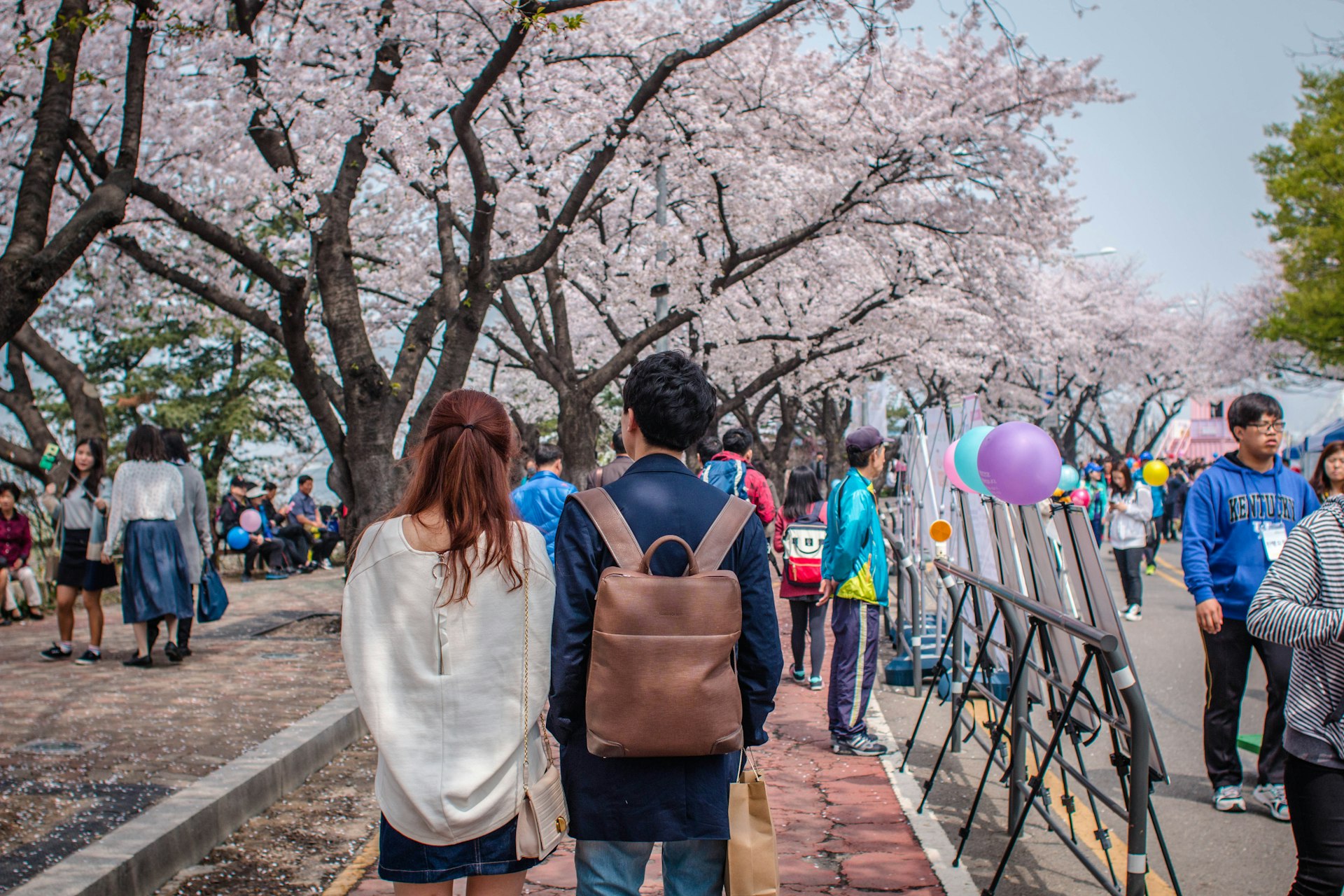
April offers spring beauty
April arguably presents Seoul’s loveliest face, when spring bursts forth in a palette of pinks and whites and the cherry blossom trees bloom in cotton-candy swirls. Two favorite viewing spots are Yeouido Park and Namsan Park, where spectators stroll down petal-lined paths and picnic beneath flowering canopies. Be careful of hwangsa, the yellow dust that also rolls through this time of year from the Gobi Desert, blanketing Seoul in pollution and clogging up the respiratory system. Face masks come in handy.
Key event: Yeouido Cherry Blossom Festival
Celebrate the Buddha’s birthday in May
On a date that varies based on the lunar calendar, Buddha’s birthday is celebrated in Seoul every late April or May, illuminating the city with the warm glow of lotus lanterns. For the most spectacular showings of these paper lights, head to two of Seoul’s biggest temples, Jogye-sa and Bongeun-sa, or to Cheong-gye-cheon stream. May also brings the annual Seoul Rose Festival, Royal Culture Festival and a magical moonlit tour of Changdeokgung palace, bookable in advance.
Key events: Moonlight tours at Changdeokgung Palace (April to June), Royal Culture Festival, Seoul Rose Festival, Lotus Lantern Festival
Head outdoors in June
Temperatures in June can vary widely (particularly as the climate continues to change), slumping to 15ºC (60ºF) one week while surging beyond 26ºC (80ºF) the next. Still, it’s a fairly dry month, making it a prime time to travel to South Korea.
Key events: Seoul Queer Culture Festival, Seoul Drum Festival
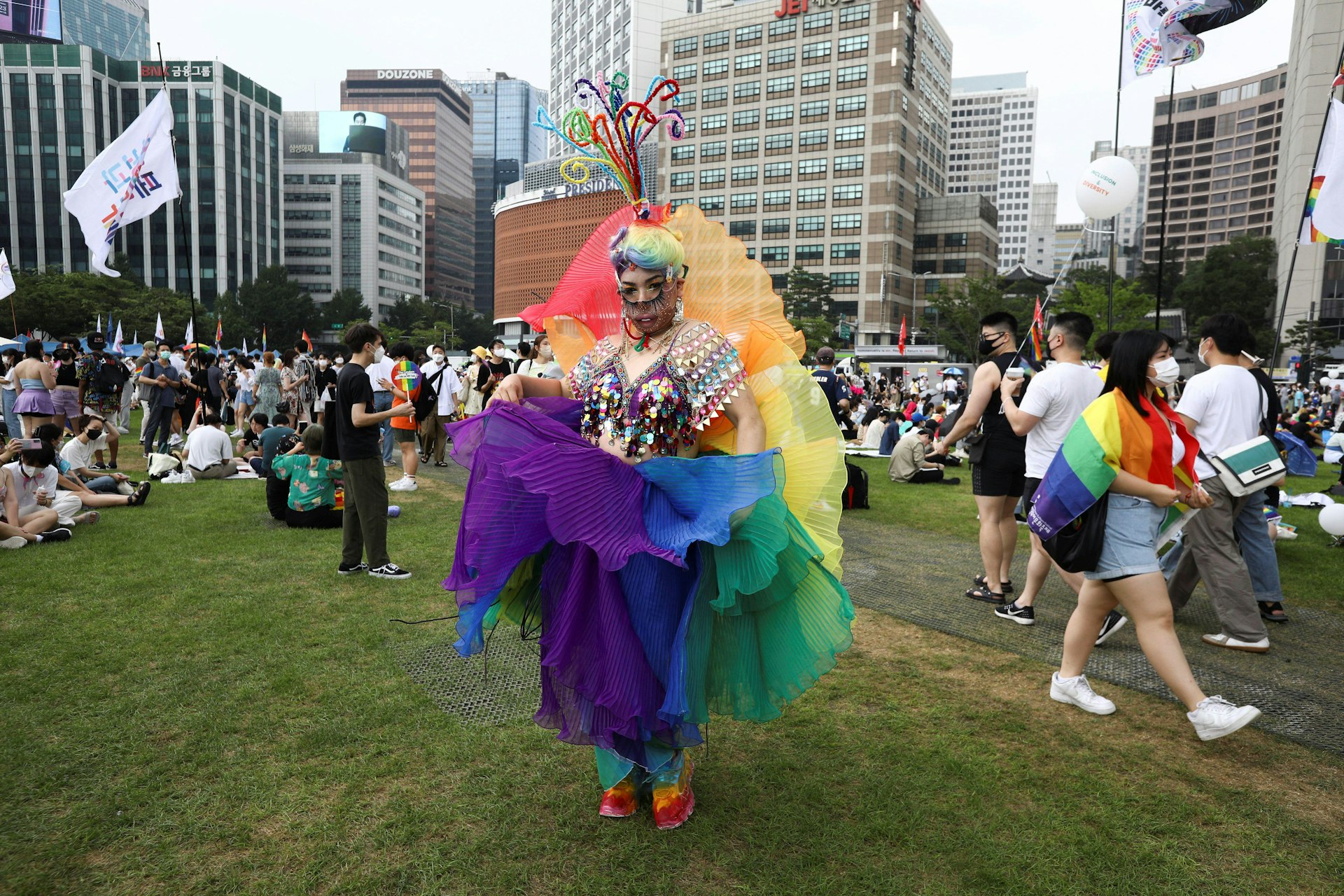
Pack an umbrella in July
Pack your umbrellas and rain boots for July, the typical start of South Korea’s weeks-long monsoon season known as jangma and Seoul’s wettest month of the year. Torrential downpours can lead to flash floods, so pay attention to weather advisories and be aware of the high ground as you wander the city. Since the heat is off the charts in July, cool off indoors with a savory bowl of naengmyeon (cold noodles) and a sweet serving of bingsu (shaved ice), or outdoors at the Sinchon Water Gun Festival.
Key event: Sinchon Water Gun Festival
August is all about hot weather, music festivals and beach days
August can bring some appealing deals on airfare, but it’s also when Korean students are on summer vacation, meaning certain attractions like shopping centers, amusement parks and swimming pools are sure to be crowded. Still stiflingly sticky outside, this month is a good time to visit Seoul’s nearby beaches, but check the forecast first: potential monsoon rains and even typhoons may have other plans in store for you.
Key events: Incheon Pentaport Rock Festival, Seoul Fringe Festival

September brings traditional harvest festivals
South Korea’s fall harvest holiday Chuseok generally takes place in September, when people go to their hometowns to eat songpyeon (sweet stuffed rice cakes) and perform ancestral rites with their families. Get into the harvest spirit by observing the ceremonial ritual of Sajik Daeje, a 50-minute procession that winds its way through the city near Gyeongbokgung station, paying homage to the ancient gods of earth and grain.
Key events: Chuseok, Sajik Daeje, Seoul International Film Festival, Gwanghwamun International Art Festival
Go for a hike in October
The heat makes its final retreat in October, leaving behind a cool, comfortable average daily high temperature of 20ºC (68ºF). As the trees go from green to burnished gold, rust and ruby tones, October is the perfect time for hiking in the mountains (Bukhansan, Namsan and Ansan are all accessible by public transportation) or wandering down Seoul’s many gingko-lined lanes. For showstopping displays of a different nature, the Seoul International Fireworks Festival and Seoul Fashion Week are bound to impress.
Key events: Seoul International Fireworks Festival, Seoul Fashion Week
Things light up in November
The crisp, dry weather continues through November and the temperature drops considerably, making this month a less expensive time to visit than September and October. The most notable happening this month might be the Seoul Lantern Festival, which sets Cheong-gye-cheon ablaze with paper lanterns and LED sculptures.
Key event: Seoul Lantern Festival
Bundle up in December
In December, the mercury plummets to bitter levels. Brave the cold and get your body moving at one of the city’s three outdoor ice rinks, where you can take in the sparkling Christmas decorations all around, or stay cozy inside in the heated baths and saunas of a jjimjilbang.
Key event: Seoul Christmas Festival

